Plenary Programme - Friday
0800 |
Tea/Coffee & Exhibition |
0915 |
Moderator: Dr Phil Friel, ADI Treasurer
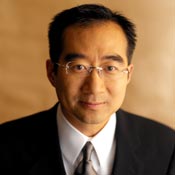 Dr Kan completed Prosthodontics, and then a Masters degree from the Advanced Implant Dentistry Program from Loma Linda University School of Dentistry (LLUSD) in 1997. He is currently a Professor in the Department of Restorative Dentistry in LLUSD and also maintains a private practice limited to Prosthodontics and Implant Surgery. In 1997, Dr Kan was the recipient of the Best Research Award in the 12th annual meeting of the Academy of Osseointegration. He received the Judson Hinckey Scientific Award from the Journal of Prosthetic Dentistry in 2003 and the Robert James Achievement Award in 2005 for his contribution in the field of Implant Dentistry. Dr Kan is on the Periodontology/Implantology Editorial Board of the Practical Procedures & Aesthetic Dentistry as well as the European Journal of Esthetic Dentistry. Dr Kan is one of few clinicians worldwide that had been trained in both the surgical and restorative discipline of implant dentistry. Besides providing both lectures and surgical demonstration worldwide, he has published over 50 articles in the area of interdisciplinary treatment with a focus on anterior implant aesthetics.
This presentation will focus on current implant treatment philosophies and methodologies for papilla management for single and multiple adjacent implants in the aesthetic zone. Emphasis will be placed on diagnosis and treatment planning, periodontal procedures, adjunctive orthodontic manoeuvers and prosthetic management for optimal anterior implant papilla esthetics. Objectives:
|
1015 |
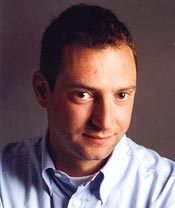 Oliver Brix trained in dental laboratory technology from 1985-1989 after which he has worked in various dental laboratories and practices specialising in the following fields: Aesthetics and function; PFM ceramics and all-ceramics; Biomechanical design of occlusal surfaces - Electroplating - Implants. From 1990-1998 he participated in numerous advanced education programmes at home and abroad. Since 1994 he has undertaken freelance work for various dental practices that specialise in functional and aesthetic fixed dentures. From 1997 he has collaborated with Dr.H.Mayer/K.Stryczek Frankfurt/M Practice specialising in implantology, mucogingival surgery and aesthetic dentistry moving on to his own laboratory in 2002 in Wiesbaden. Since 1993 he has been a freelance instructor and lecturer for professional publications: Quintessenz Dentallabor, Zahntechnik Magazin and Teamwork Dental dialogue. He has lectured internationally and given courses on aesthetics and ceramics. He is Guest Lecturer: Ivoclar Vivadent AG and Ivoclar Vivadent Germany, since 1997 has been a Member of the dental laboratory working group of Düsseldorf, since 2000 a Board member of DGÄZ (German association of aesthetic dentistry) and in March 2001 the Author of ‘Fundamentals of aesthetics’
This practice-centred master lecture focuses on the fundamental elements of the aesthetics of restorations. To reach a natural looking result and harmony, the knowledge of natural relations and structures is as important as the communication between dentists and technicians. This lecture will address the entire topics of contemporary dentistry from the preparation to provisionals and the way to the final ceramic work. A comprehensive treatment planning including face examinations are just some parts you will be shown, and many clinical cases demonstrate the efforts and results of a sound planning and teamwork. An overview of the fascination of all–ceramics will be included as well. |
1115 |
Tea/Coffee & Exhibition |
1145 |
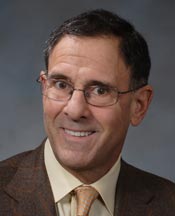 Dr Wallace is a 1971 graduate of Boston University School of Graduate Dentistry with a Certificate in Periodontics. He has been on the faculty of the New York University Department of Implant Dentistry for 16 years with the academic rank of Associate Professor. He is a Diplomate of the International Congress of Oral Implantology and a Fellow of the Academy of Osseointegration. He currently is Chairman of the Academy of Osseointegration committee for hands-on education. Dr Wallace lectures at home and abroad on issues relating to dental implantology and Periodontics. He is the author of an evidence-based review of the sinus augmentation procedure published in the Annals of Periodontology as well as many journal articles and textbook chapters. He is co-editor of a textbook on sinus elevation surgery recently published by Quintessence. In addition to his faculty appointment, Dr Wallace maintains a practice for Periodontics in Waterbury, CT.
Maxillary sinus augmentation surgery is the most predictable of the pre-prosthetic augmentation techniques as reported in the 2006 Academy of Osseointegration Sinus Consensus Conference. Eight evidence-based reviews have been published since 2003 that establish the most successful decisions that we make as surgeons performing this procedure. There are, however, intraoperative complications that may preclude the successful completion of this procedure. There are also many new grafting concepts that include growth factors, bone morphogenetic proteins and fresh frozen allografts that may lead to enhanced outcomes. This presentation will address these issues with topics including:
|
1245 |
Moderated Discussion |
1300 |
Buffet Lunch & Exhibition |
1415 |
Moderator: Professor Cemal Ucer, ADI President Elect
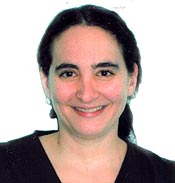 Dr Aghaloo is an Associate Professor in Oral and Maxillofacial Surgery at the UCLA School of Dentistry. She completed her dental training at the University of Missouri, Kansas City in 1994. From there, she went on to do her residency in Oral and Maxillofacial Surgery with an MD degree from UCLA. Subsequently, she completed a PhD. in oral biology at UCLA. Her clinical practice is in oral and maxillofacial reconstruction, focusing on hard and soft tissue augmentation and dental implants. Dr Aghaloo has published extensively in bone biology with an emphasis on bone grafting to improve our current practices and dental implant success. She is also very active in several professional organisations such as the AAOMS, IADR, and AO. Currently, she is Chair of the stem cell group for the Academy of Osseointegration’s Silver Anniversary Summit: Impact of Biological and Technological Advances on Implant Dentistry, and is the program chair for the 2011 Academy of Osseointegration meeting.
Bone grafting for implant site development is an important part of planning and executing treatment for the dental implant patient. From simple procedures such as socket augmentation to more complicated and extensive alveolar ridge augmentation, the final aesthetic and functional result should be the goal at all stages (1,2). In attempt to preserve alveolar bone and avoid the necessity of ridge augmentation prior to implant placement, various materials have been used immediately following tooth extraction to fill and/or cover the socket in preparation for dental implants (3). In addition, more significant anterior and posterior alveolar ridge defects often require allografts, autogenous bone harvesting, and the use of growth factors. Unfortunately, many of these procedures are quite technique sensitive, and do not have adequate literature to support their use (2). This presentation will review bone grafting techniques and materials, and their success in implant dentistry from the past and present. It will also cover new technologies that are becoming available to clinicians, which may have more applications for implant dentistry in the future. References
|
1515 |
Moderated Discussion |
1530 |
Tea/Coffee & Exhibition |
1600 |
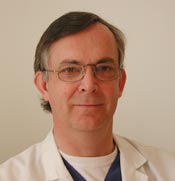 Dr Jemt became Associate professor in 1986 and Professor in 2003 at the Department of Prosthetic Dentistry and Dental Materials, The Sahlgrenska Academy at Göteborg University. Dr Jemt was a co-worker of P-I Brånemark during the late 1970s and early 1980s. He was during this period responsible for development of the first single implant abutments. Dr Jemt was in 1986 co-founder of the Brånemark Clinic, the implant specialist clinic within the general health dental service in Gothenburg, where he has served since then. He is a member of the editorial board of several international journals and he has published over 130 scientific publications and lectured over the world for more than 25 years on dental implants.
It is more than 45 years ago since the first patient was treated with osseointegrated implants in the edentulous jaw by Dr Brånemark. Besides the introduction of the principles of osseointegration, Dr Brånemark was also a pioneer in using clinical follow-up studies to report clinical function and long-term performance of the rehabilitation in dentistry. Biological as well as mechanical problems and complications have been reported during the years, which have initiated modifications of techniques and components. Furthermore, new applications have been introduced, and modified implant treatment protocols have been tested. This presentation will discuss how treatment protocols have changed during the years and also discuss long-term observations with regard to mechanical and biological results in situations from the edentulous patient to the single implant restoration. The presentation will focus on the process of how the protocol has changed over time and the problem how to try to predict long-term results, based on preliminary examination and early biological observations. |
1700 |
Moderated Discussion |
1715 |
Close of Sessions |
1730 |
Close of Exhibition |
